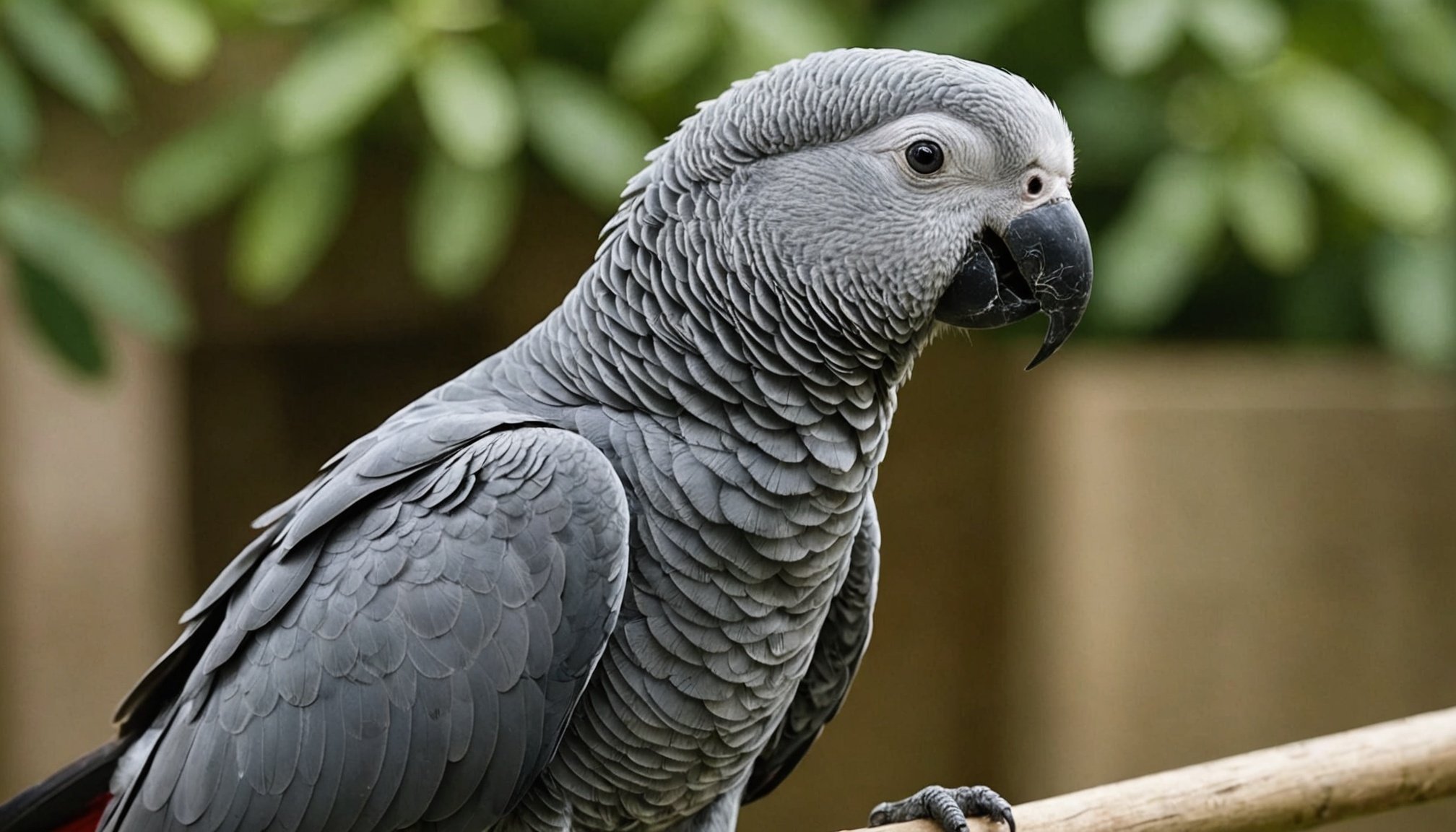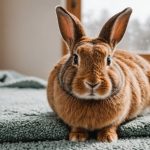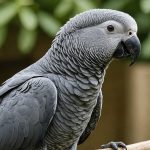The Ultimate Guide to Caring for African Grey Parrots in the UK: Key Responsibilities for Enthusiasts
Understanding Your African Grey Parrot
When you decide to bring an African Grey parrot into your home, you are not just acquiring a pet; you are committing to a long-term relationship with a highly intelligent and social bird. African Greys, particularly the Congo and Timneh species, are renowned for their advanced cognitive abilities and their capacity to mimic human speech.
Cognitive Abilities and Speech
African Greys are among the most intelligent bird species, often compared to primates in terms of cognitive capabilities. Studies by Dr. Irene Pepperberg with her parrot Alex have shown that these birds can use words meaningfully in linguistic tasks, although there is ongoing debate about whether they truly understand language or merely mimic sounds[5].
Also to see : Unlocking the secrets of rat training: expert methods to teach your pet rat fun tricks
For example, Alex, the African Grey studied by Dr. Pepperberg, could identify objects, count up to six, and even exhibit emotional understanding. This level of intelligence means that your parrot will need constant mental stimulation to prevent boredom and behavioral issues.
Social Interaction
African Greys are highly social birds that thrive on interaction. In the wild, they live in large flocks, and this social nature is something you need to replicate in your home. Here are some ways to ensure your parrot gets the social interaction it needs:
- Spend Quality Time: Engage in activities like talking, playing, and simply sitting with your parrot.
- Provide Companions: If possible, consider getting another parrot as a companion, but ensure they are compatible.
- Rotate Toys and Environments: Keep your parrot’s environment interesting by rotating toys and rearranging the aviary.
Nutrition and Diet
A balanced diet is crucial for the health and well-being of your African Grey parrot. Here’s what you need to know:
High-Quality Food
A good diet for an African Grey should include a variety of foods to ensure they get all the necessary nutrients. Here are some key components:
- Pellets: A high-quality pellet should be the main staple of their diet, making up about 50% of their food intake.
- Fresh Fruits and Vegetables: Offer a variety of fresh fruits and vegetables daily. Examples include carrots, apples, and leafy greens.
- Nuts and Seeds: Include nuts and seeds in moderation due to their high fat content. A mix like the one from Britten & James, which includes a variety of nuts and seeds, can be a good supplement[2].
Avoiding Toxic Foods
Some foods are toxic to parrots and should be avoided at all costs. These include:
- Chocolate
- Caffeine
- Avocado
- Onions and Garlic
- Raw or Undercooked Meat
Here is a detailed list of what to include and avoid in your parrot’s diet:
Recommended Foods:
- Pellets
- Fresh fruits (apples, bananas, berries)
- Fresh vegetables (carrots, sweet potatoes, leafy greens)
- Nuts and seeds (almonds, sunflower seeds, pumpkin seeds)
- Whole grains (brown rice, quinoa)
Foods to Avoid:
- Chocolate
- Caffeine
- Avocado
- Onions and garlic
- Raw or undercooked meat
- High-sugar foods
- High-salt foods
Health and Veterinary Care
Regular health checks are essential for maintaining the well-being of your African Grey parrot.
Avian Vet Visits
It is crucial to find an avian vet who specializes in bird care. Here are some reasons why regular vet visits are important:
- Annual Check-Ups: Annual check-ups can help identify health issues early.
- Vaccinations: Some vaccinations may be necessary to protect against diseases.
- Behavioral Issues: An avian vet can also help with behavioral issues such as feather plucking.
Common Health Issues
African Greys can be prone to several health issues, including:
- Respiratory Problems: These can be caused by poor air quality or allergies.
- Feather Plucking: Often a sign of stress, boredom, or health issues.
- Psittacosis: A bacterial infection that can be transmitted to humans.
Here is a table comparing some common health issues in African Greys and their symptoms:
| Health Issue | Symptoms |
|---|---|
| Respiratory Problems | Wheezing, coughing, difficulty breathing |
| Feather Plucking | Bald spots, excessive preening |
| Psittacosis | Lethargy, loss of appetite, difficulty breathing |
| Behavioral Issues | Screaming, aggression, self-mutilation |
Environmental and Housing Needs
Providing the right environment is vital for the health and happiness of your African Grey parrot.
Aviary Size and Layout
The aviary should be spacious enough to allow your parrot to fly, stretch, and exercise. Here are some guidelines:
- Minimum Size: The aviary should be at least 2x3x4 feet in size.
- Bar Spacing: Bars should be spaced about 1.5 inches apart to prevent escape and injury.
- Perches and Toys: Include a variety of perches and toys to keep your parrot entertained.
Temperature and Humidity
African Greys prefer a warm and humid environment. Here are some tips:
- Temperature: Keep the temperature between 65°F to 85°F (18°C to 30°C).
- Humidity: Maintain a humidity level of around 50-60%.
Behavioral Care and Mental Stimulation
African Greys need constant mental stimulation to prevent behavioral issues.
Toys and Activities
Rotate toys regularly to keep your parrot engaged. Here are some ideas:
- Puzzle Toys: Toys that challenge your parrot to figure out how to get a treat.
- Interactive Toys: Toys that require interaction, such as bell toys or foot toys.
- Foraging Activities: Hide treats around the aviary to encourage foraging behavior.
Training and Socialization
Training and socialization are key to developing good behavior in your parrot. Here are some tips:
- Positive Reinforcement: Use positive reinforcement techniques to train your parrot.
- Socialization: Socialize your parrot with different people and environments to make them more confident.
Traveling with Your Parrot
If you need to travel with your African Grey, it’s important to do it safely and comfortably.
Choosing the Right Service
Companies like Animal Aircare specialize in pet travel and can provide safe and comfortable transportation for your parrot[1].
Preparing Your Parrot
Before traveling, make sure your parrot is accustomed to its travel cage. Here are some steps to prepare:
- Acclimate the Cage: Place your parrot in the travel cage for short periods before the trip.
- Provide Familiar Items: Include familiar items like favorite toys or perches in the travel cage.
Caring for an African Grey parrot is a significant commitment, but with the right knowledge and dedication, it can be incredibly rewarding. Here are some final tips from experienced pet parents:
- “Make sure you have plenty of time to spend with your parrot. They thrive on interaction and attention.” – Sarah, African Grey owner
- “A balanced diet is crucial. Avoid giving them human food, especially toxic foods like chocolate and avocado.” – John, avian vet
- “Provide a variety of toys and activities to keep your parrot mentally stimulated. This helps prevent behavioral issues like feather plucking.” – Emily, parrot behaviorist
By following these guidelines, you can ensure your African Grey parrot leads a happy, healthy, and fulfilling life. Remember, every parrot is unique, so be prepared to adapt and learn as you go along. With patience, love, and the right care, your African Grey will become a beloved and integral member of your family.











